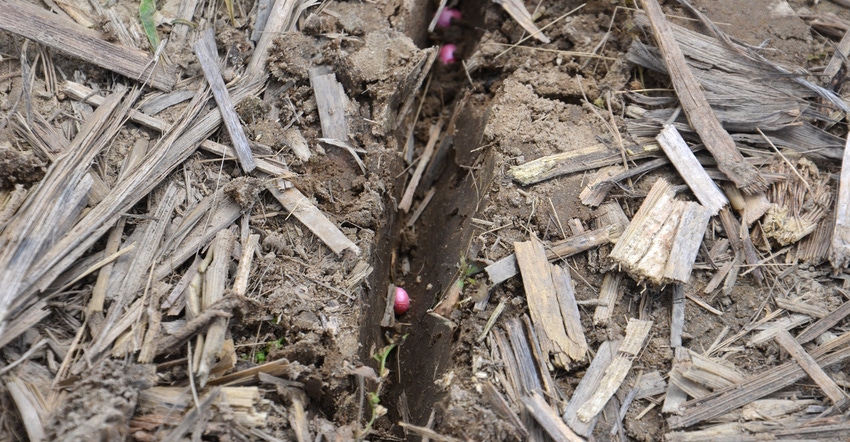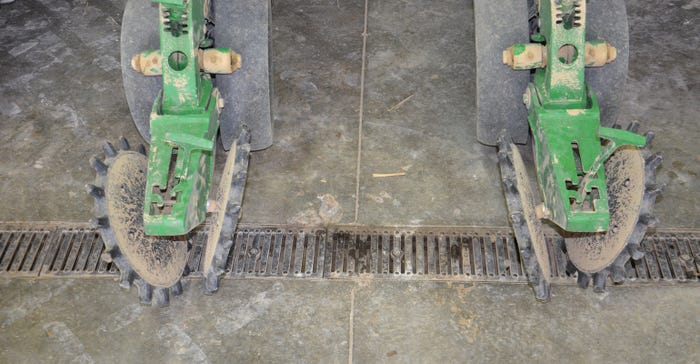
Maybe an open seed slot doesn’t seem like a big deal. And maybe it wasn’t quite as crucial when farmers typically seeded 170,000 to 200,000 soybean seeds per acre. Today, however, when most farmers seed 130,000 to 140,000 soybean seeds per acre, often in 15-inch rows, getting the slot closed is important — especially to obtain even emergence.
“It’s a key to making sure soybeans germinate and emerge evenly,” says Steve Gauck, regional agronomy manager for Beck’s, Greensburg, Ind. “People talk a lot more about the importance of even emergence in corn. Soybeans tend to compensate for lots of things more than corn, but you still want even germination and emergence in soybeans as much as possible if you’re after top yields.”
Beck’s sponsors Soybean Watch ’20. One of the goals of the project is to share observations from the Soybean Watch field in central Indiana that might apply to your fields. In previous years, if soils have been a bit on the tacky side, by necessity, slots haven’t always closed everywhere in the field.
When slots don’t close, at least two things happen — and both are bad, Gauck says. First, a soybean lying in an open slot has minimal seed-to-soil contact. And if it doesn’t rain soon after planting and conditions dry out, even if soils were moist at planting, the seed may not have enough moisture to germinate and emerge properly.
Best-case scenario is that seeds wait for rain and then germinate, filling in the stand and perhaps adding some yield. Worst-case, they have enough moisture to start germinating but not enough to continue, dry out and die.
Second, an open seed slot increases chances for exposure to insects and other pests. “Bad things happen when the seed slot doesn’t close,” Gauck says.
Closing wheel options
One remedy is to seek equipment to perform the closing wheel function that is more efficient in less-than-perfect conditions. Often these are situations where soils have more moisture than you like.
Beck’s tests various types of closing wheels in its Practical Farm Research plots. The company equips a planter with different closing wheels, one set per row, and then performs replicated tests. There are literally dozens of closing wheel choices on the market. Some options that have caught farmers’ attention the most were included in the Beck’s PFR work.
Based on three-year averages at multiple locations, every aftermarket closing wheel outperformed the standard two solid rubber closing wheels in terms of yield. The top four products in the PFR three-year trial are the Yetter Twister Poly, Copperhead Ag Furrow Cruiser, S.I. Distributing Finger-Till and Schaffert Mohawk, with yield advantages of 2.5, 1.7, 1.6 and 1.3 bushels per acre, respectively.

CLOSE THE SLOT: Impressed by Yetter’s Twister Poly Closing Wheels in Beck’s PFR results, the Soybean Watch operator tried them, liked how they closed slots, and retrofitted his entire planter.

Ironically, the difference isn’t due to a better emerged stand. In fact, emerged stand was slightly better for the standard rubber wheels.
“Plants emerging behind the aggressive wheels where the slot closed were more productive,” Gauck says. “Two solid rubber wheels can smash soil over the seed even if the slot closes, causing it to emerge with negative long-term consequences.
“Those solid rubber wheels typically create more sidewall compaction, too.”
About the Author(s)
You May Also Like




